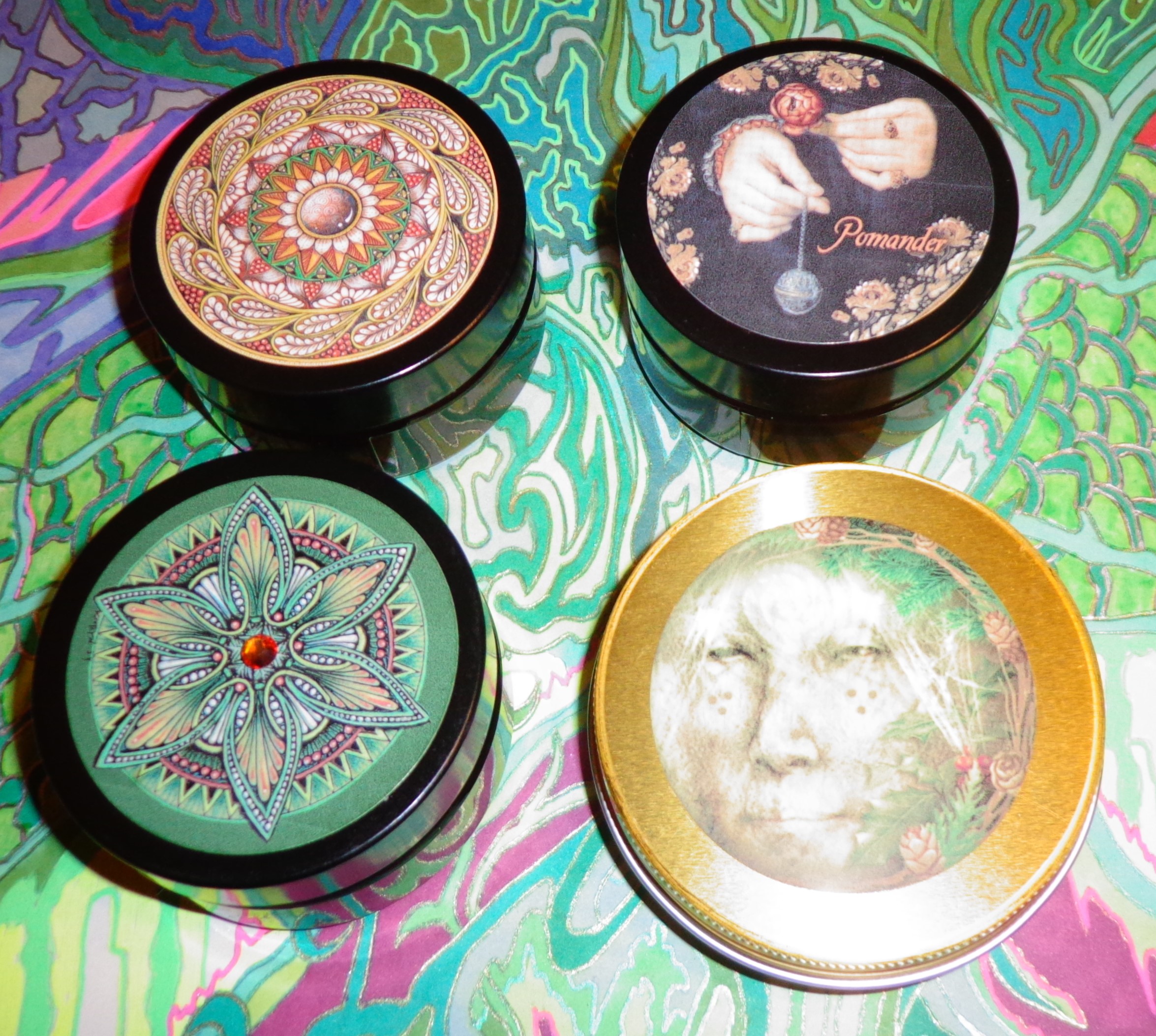
So first of all, Happy New Year to all, this is the first review of 2024. I am happy to report that I got a lot of review work done and so expect to see reviews every third day until sometime in February. Thanks also to Katlyn Breene of Mermade Magickal Arts who has always been a big supporter of ORS, this will hopefully be the first of two reviews of her recent incenses, which are as good as they always are, if not better.
I can’t really imagine a holiday/Winter Solstice season without the incenses of Mermade Magickal Arts,, Katlyn’s wintery blends have been among my favorite heatable incenses for the last decade or two, in fact if you look at the reviews index you’ll see a whole lot of them have gone by. Some like Wild Wood are now perennials, if not classics. While you can get greenness in stick incense, I’m not sure you can ever get it in the sort of resolution where different kinds of evergreens – pine, spruce, fir, juniper etc – actually contour the whole palette of an incense. And even beyond these green wonders, Katlyn has experimented nearly every year coming up with all sorts of treats in the winter tradition. And like with my review on Dimension 5, I really should mention that I don’t think Mermade has steered off of making great incenses ever since I first discovered them, before I even started ORS, so if you’re picking up a bias, then yeah I will gladly own it, in fact I’d suggest if you’ve tried any of her incenses you may have also picked it up too. Katlyn is the premiere artist of these sorts of incenses in the US and this group is another bunch of quality scents. In fact what really impressed me this time was how long lasting they were. I accidentally left my heater on high with Winter Wreath sitting on it overnight and I swear it was still emitting a great scent the next morning, so these are also incredibly long-lasting scents.
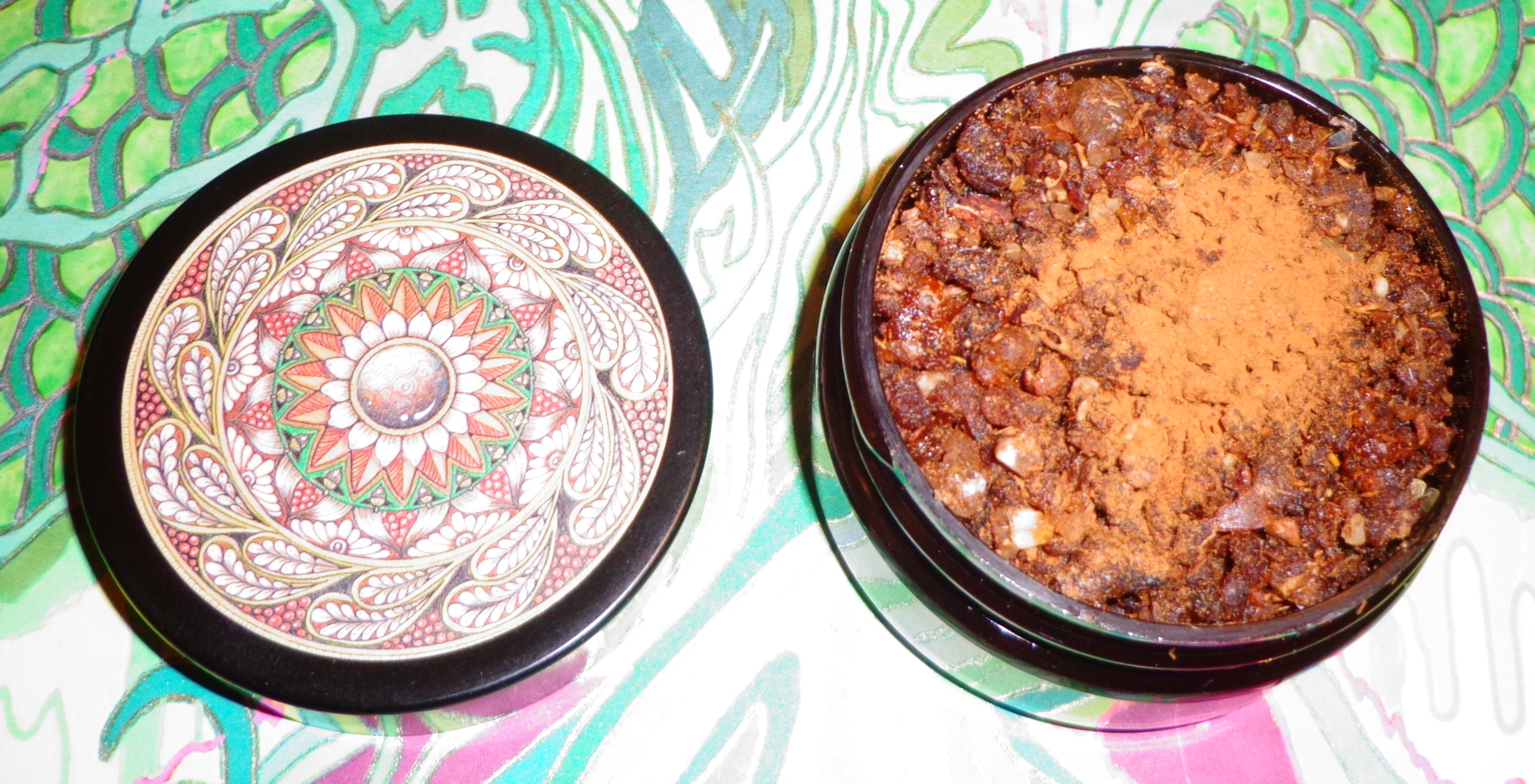 But before we get to the winter incenses, let’s pop back to the autumn for Mermade’s Demeter’s Bakery. As soon as I had this heating, I started getting a sense of nostalgia about the scent. Over time I realized that it was reminding me in some sense of an old Nu Essence blend that I think was the Pluto. I scrambled back through our archives and realized Ross had reviewed this one many moons ago; however, I think I only matched up the benzoin as being overlapping. But the thing is, the longer you heat Demeter’s Bakery, the more it sort of transforms and modulates over time and so it even began to move past this later in the heat. The incense has a huge, yummy list of goodies in it: Omani black frankincense, Kua myrrh, Yemeni myrrh, ornifolia resin, massoia bark, anise seeds, Saigon cinnamon, benzoin, hay absolute, vanilla, Peru balsam, and black currant absolute. Once I gave this a second heat at the suggested temperature of about 230C, I noticed once again that similarity to Pluto, but where it felt like that aroma was created a bit by the sandalwood and bitter almond, here it’s much harder to call except that this is very much like a heated bakery good all the way through with that bit of yeast to get the bread to rise. Of course part of this is all the spices and the vanilla, but it seems almost facile to just talk about the cinnamon when there is so much going on at the spice level here, it’s like a rainbow of scent. But that sugar spice smell is right at the center of this and makes it oh so friendly. It’s funny with incense I often don’t even think of how important baked good are to our olfactory senses, how important cooking memories are to our olfactory experience. What’s clever about this one is it seems to start with those memories but then runs in a whole new direction with them. The second phase of the heat, feels like some of the moistness of the scent gives way to a more austere dry quality almost as if your baked good is finishing up. I think some of this is dependent on how much resin is in the heater cup and much later in the heat when its exhausted, some of the frankincense and myrrh remains give it a different quality as well. All in all this is some really fine work and somewhat different for Mermade as well.
But before we get to the winter incenses, let’s pop back to the autumn for Mermade’s Demeter’s Bakery. As soon as I had this heating, I started getting a sense of nostalgia about the scent. Over time I realized that it was reminding me in some sense of an old Nu Essence blend that I think was the Pluto. I scrambled back through our archives and realized Ross had reviewed this one many moons ago; however, I think I only matched up the benzoin as being overlapping. But the thing is, the longer you heat Demeter’s Bakery, the more it sort of transforms and modulates over time and so it even began to move past this later in the heat. The incense has a huge, yummy list of goodies in it: Omani black frankincense, Kua myrrh, Yemeni myrrh, ornifolia resin, massoia bark, anise seeds, Saigon cinnamon, benzoin, hay absolute, vanilla, Peru balsam, and black currant absolute. Once I gave this a second heat at the suggested temperature of about 230C, I noticed once again that similarity to Pluto, but where it felt like that aroma was created a bit by the sandalwood and bitter almond, here it’s much harder to call except that this is very much like a heated bakery good all the way through with that bit of yeast to get the bread to rise. Of course part of this is all the spices and the vanilla, but it seems almost facile to just talk about the cinnamon when there is so much going on at the spice level here, it’s like a rainbow of scent. But that sugar spice smell is right at the center of this and makes it oh so friendly. It’s funny with incense I often don’t even think of how important baked good are to our olfactory senses, how important cooking memories are to our olfactory experience. What’s clever about this one is it seems to start with those memories but then runs in a whole new direction with them. The second phase of the heat, feels like some of the moistness of the scent gives way to a more austere dry quality almost as if your baked good is finishing up. I think some of this is dependent on how much resin is in the heater cup and much later in the heat when its exhausted, some of the frankincense and myrrh remains give it a different quality as well. All in all this is some really fine work and somewhat different for Mermade as well.
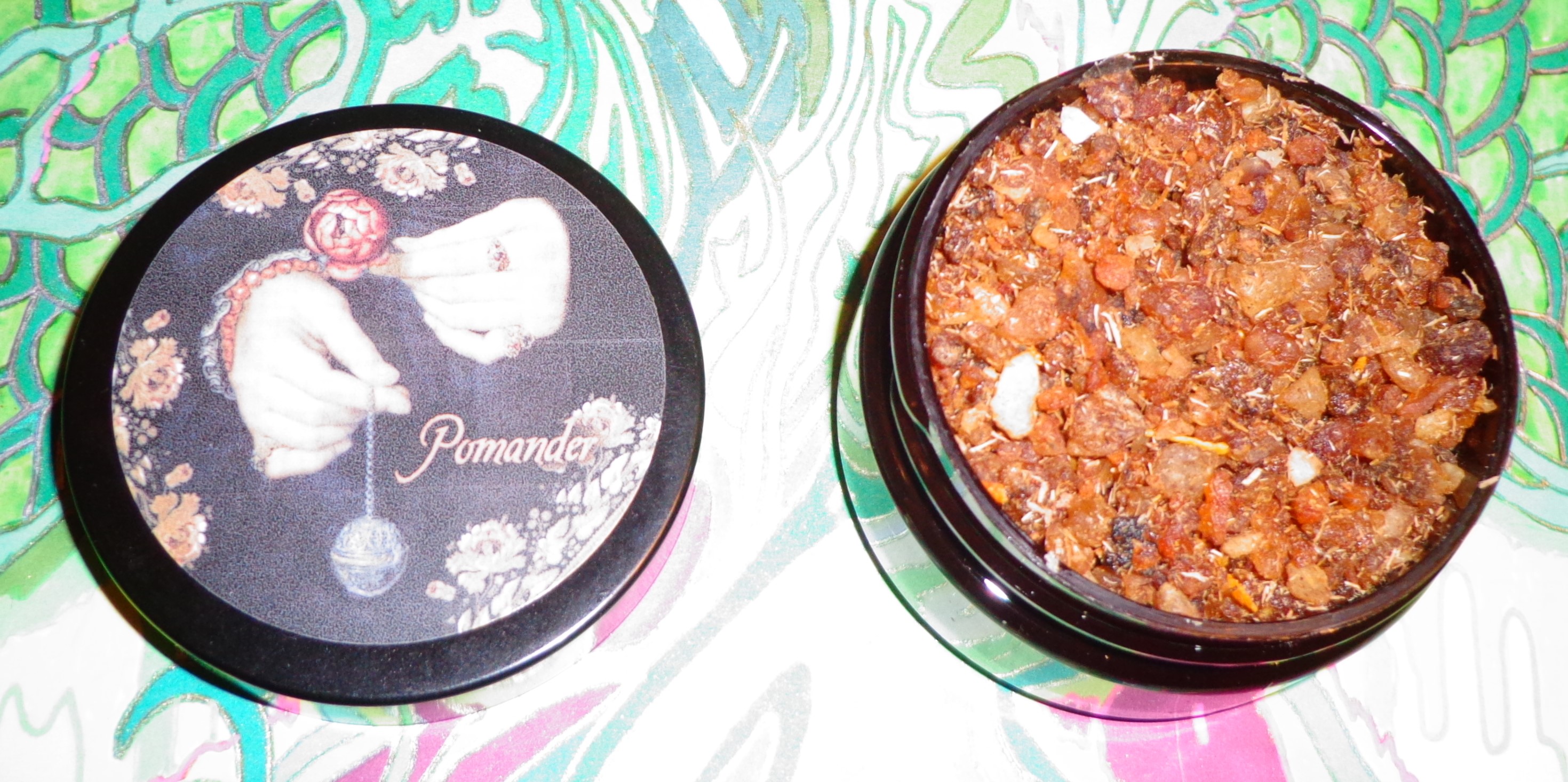 I have probably brought this up before (I seem to remember doing so recently with the Temple of Incense Festive Kiss which is certainly in the same spirit) but one of my early memories was a recipe my mom made called “spiced tea.” It was a very 70s sort of thing with Tang powder, Lipton tea and spices. It had loads of sugar and smelled amazing so of course I loved it. Mermade’s Pomander is an almost 100% accurate representation of how I remember it smelling so this one moved pretty quickly to one of my very favorite incenses this year. In an environment where the most prized scents are rare woods or ingredients it’s always good to know that something a lot more conventional can do the trick as well. However the trick to this is that it’s not created conventionally but with a whole lot of artistic skill to make sure this is a real delight. If I have the list right, I read the ingredients as Carmel benzoin; labdanum absolute; Peru balsam; aromatic winter spices; Saigon cinnamon; clove; carnation absolute; bitter orange essential oil and orange zest; green, honey and silver frankincense; kua crimson; Yemeni myrrh; Mysore sandalwood; styrax liquidambar; and vanilla. What I love about all of this is just how it all coalesces into a simple but powerful spiced orange incense. It is just utterly perfect and I can’t recommend it more highly.
I have probably brought this up before (I seem to remember doing so recently with the Temple of Incense Festive Kiss which is certainly in the same spirit) but one of my early memories was a recipe my mom made called “spiced tea.” It was a very 70s sort of thing with Tang powder, Lipton tea and spices. It had loads of sugar and smelled amazing so of course I loved it. Mermade’s Pomander is an almost 100% accurate representation of how I remember it smelling so this one moved pretty quickly to one of my very favorite incenses this year. In an environment where the most prized scents are rare woods or ingredients it’s always good to know that something a lot more conventional can do the trick as well. However the trick to this is that it’s not created conventionally but with a whole lot of artistic skill to make sure this is a real delight. If I have the list right, I read the ingredients as Carmel benzoin; labdanum absolute; Peru balsam; aromatic winter spices; Saigon cinnamon; clove; carnation absolute; bitter orange essential oil and orange zest; green, honey and silver frankincense; kua crimson; Yemeni myrrh; Mysore sandalwood; styrax liquidambar; and vanilla. What I love about all of this is just how it all coalesces into a simple but powerful spiced orange incense. It is just utterly perfect and I can’t recommend it more highly.
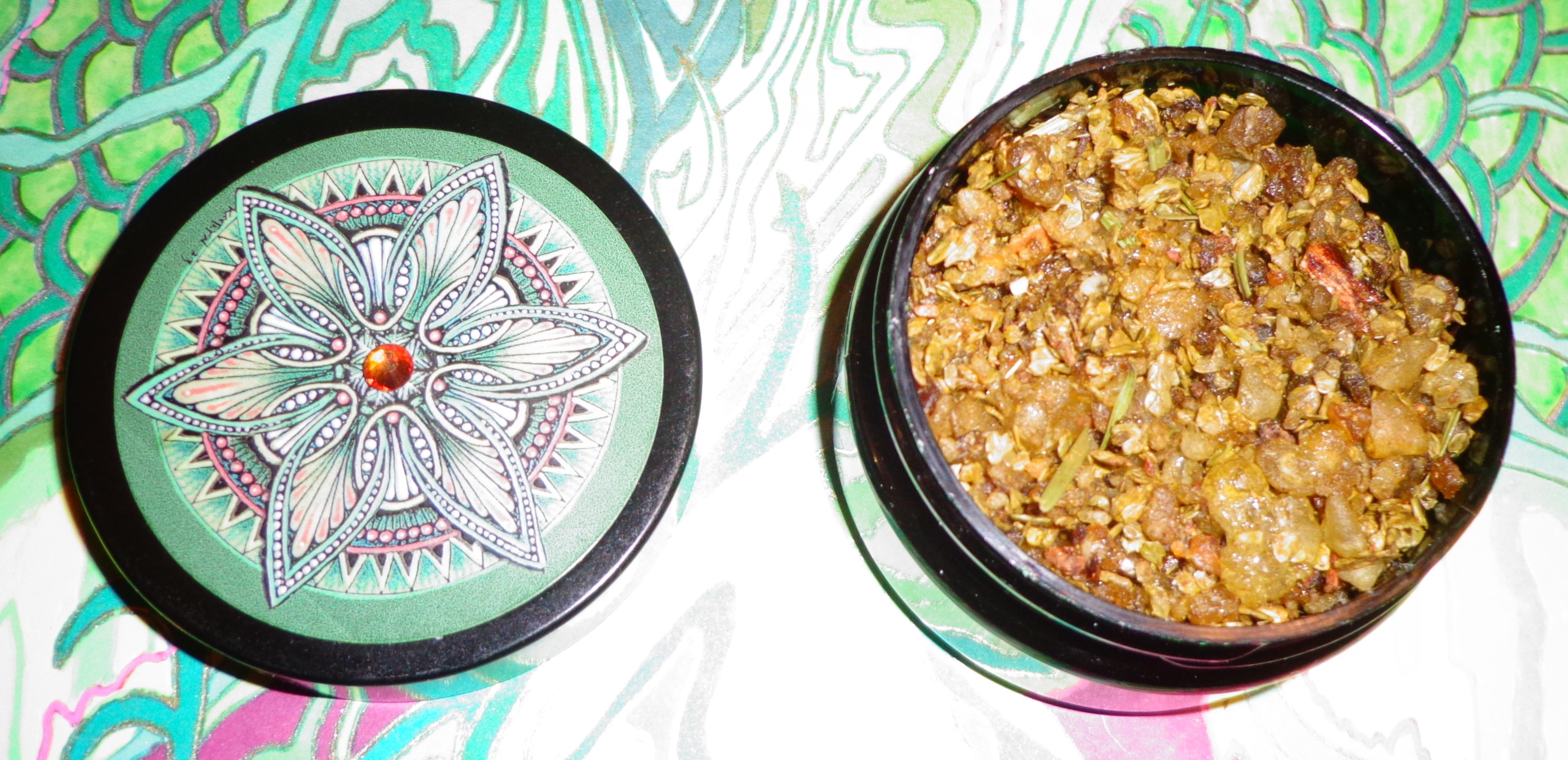 Winter Wreath is another classic winter green mix, Katlyn has gotten so good at these over the last couple of decades that I don’t expect anything less than top notch. This mix seems to have a bit of an herbal component to it that mixes it up a bit (it may just be some of the cedar touches), but it just ends up enhancing the increasingly high resolution mix of the usual wonderful ingredients: fir balsam resin and needles, Aleppo and Sweet Pinon pine, arbor vitae (Thuja cedar) and red cedar – you can nearly pick each one out in the mix, an amazing thing with evergreens all this close in family. These scents are all magnified by the resin mix of copal blanco, Oman frankincense sacra, and kua myrrh in the usual manner, giving that real depth to the top green scents. One thing I love about this resin mix is a lot of lime is coming out of the bottom which I assume is probably the quality of the copal blanco in the mix. It makes me think back to some of the older winter blends in the sense that this quality has shown up before, but this is probably one of the first times I’ve really noticed it, it’s such a powerful note that I’m reminded of key lime pie. It blends absolutely perfectly with all the wonderful evergreen notes as well. The myrrh seems to be more in the mix later in the heat, transmuting the blend into something different, almost wistful and poignant. It’s hard to say more, if you’re a long time customer of Katlyn’s then you probably know this kind of thing very well and if you aren’t it’s a perfect way in. Like I mentioned earlier, this a blend that heats for ages too, I can imagine getting at least 12 hours of a heat if you fill a foil container about half full or so.
Winter Wreath is another classic winter green mix, Katlyn has gotten so good at these over the last couple of decades that I don’t expect anything less than top notch. This mix seems to have a bit of an herbal component to it that mixes it up a bit (it may just be some of the cedar touches), but it just ends up enhancing the increasingly high resolution mix of the usual wonderful ingredients: fir balsam resin and needles, Aleppo and Sweet Pinon pine, arbor vitae (Thuja cedar) and red cedar – you can nearly pick each one out in the mix, an amazing thing with evergreens all this close in family. These scents are all magnified by the resin mix of copal blanco, Oman frankincense sacra, and kua myrrh in the usual manner, giving that real depth to the top green scents. One thing I love about this resin mix is a lot of lime is coming out of the bottom which I assume is probably the quality of the copal blanco in the mix. It makes me think back to some of the older winter blends in the sense that this quality has shown up before, but this is probably one of the first times I’ve really noticed it, it’s such a powerful note that I’m reminded of key lime pie. It blends absolutely perfectly with all the wonderful evergreen notes as well. The myrrh seems to be more in the mix later in the heat, transmuting the blend into something different, almost wistful and poignant. It’s hard to say more, if you’re a long time customer of Katlyn’s then you probably know this kind of thing very well and if you aren’t it’s a perfect way in. Like I mentioned earlier, this a blend that heats for ages too, I can imagine getting at least 12 hours of a heat if you fill a foil container about half full or so.
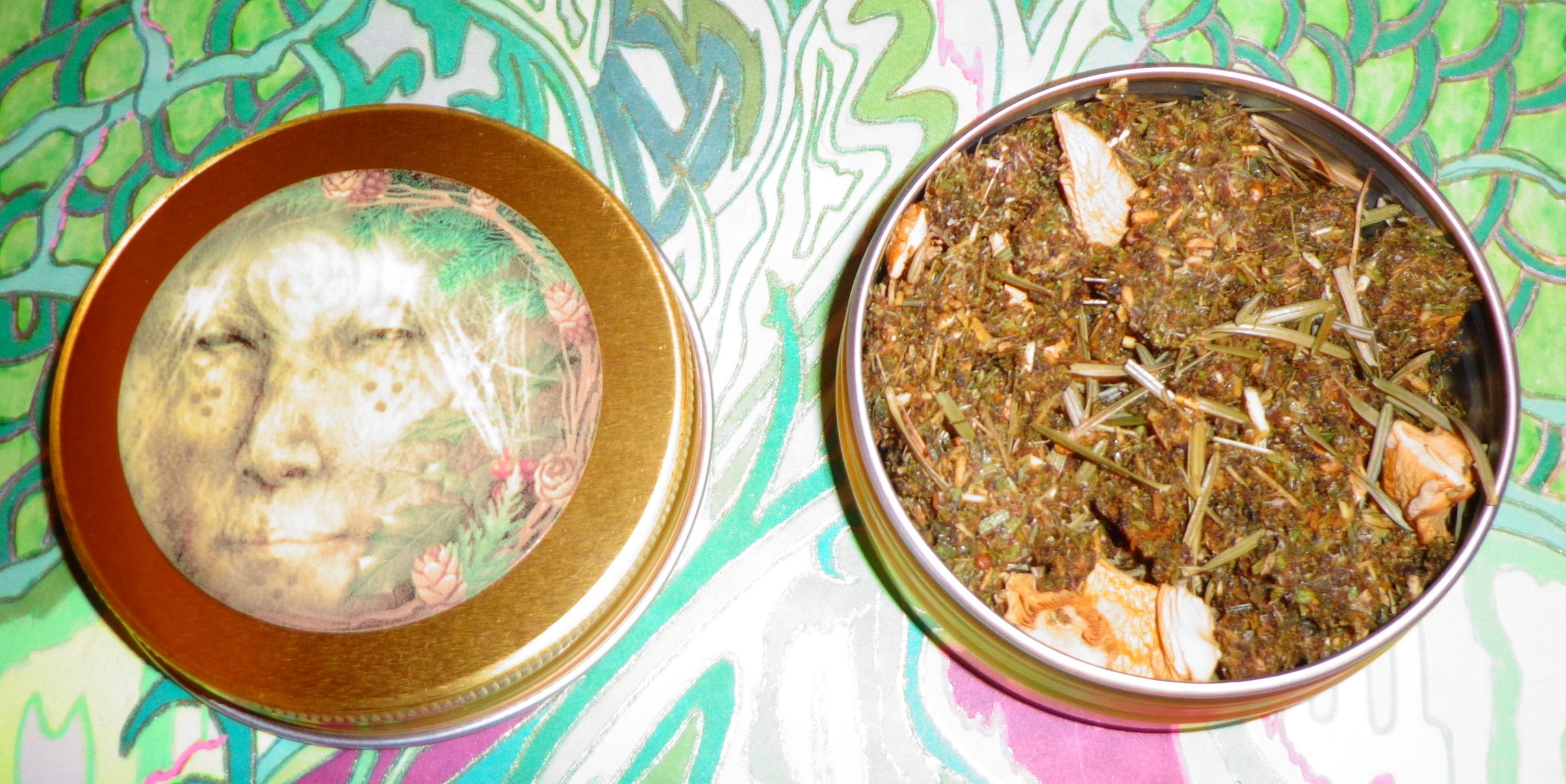 And not terribly far from Winter Wreath is the Espirit de la Nature offering The Light Mothers, an incense offered as a pair with The Dark Mothers, both presenting different winter energies for the season. Unfortunately these two sold out right before I posted this, but I’m leaving the review for posterity (and a reminder that EdlN incenses often go really fast at Mermade!) This incense has a really sizeable list of ingredients including balsam fir resin, larch wood, juniper berries, cedarwood, larch needles, balsam fir needles, cedarwood, mugwort, sweetgrass, tree mosses, pinyon pine resin, pinus sylvestris resin, mastic resin, galbanum resin, camphor flakes, amanita muscaria mushrooms, as well as extracts of balsam fir, juniper berry, and cedar. As you can tell in the picture these come as pieces, although it looks like the mushrooms are in there as larger chunks. Those versed in Bonnie’s intensely personalized style of incense will be familiar with her careful and gentle approach. But while all of her creations are really subtle and widely resonant, this one is a bit louder in the mix, which is good for my oversaturated olfactory organs. While this incense shares some ingredients with Winter Wreath, it definitely goes in a different direction without that resinous backdrop, creating a similar aromatic depth with the extracts. To the fore are the larch ingredients and this might be only something I got by trying a couple of EdlN’s earlier blends with this magic scent involved, but it’s an unforgettable scent, one I almost immediately purchase anything with it in it. As always even this wide variety of ingredients can usually be detected with some guided sniffing, I’m always impressed with the way Bonnie puts so many voices together until it feels steered by one greater entity. Utterly brilliant work.
And not terribly far from Winter Wreath is the Espirit de la Nature offering The Light Mothers, an incense offered as a pair with The Dark Mothers, both presenting different winter energies for the season. Unfortunately these two sold out right before I posted this, but I’m leaving the review for posterity (and a reminder that EdlN incenses often go really fast at Mermade!) This incense has a really sizeable list of ingredients including balsam fir resin, larch wood, juniper berries, cedarwood, larch needles, balsam fir needles, cedarwood, mugwort, sweetgrass, tree mosses, pinyon pine resin, pinus sylvestris resin, mastic resin, galbanum resin, camphor flakes, amanita muscaria mushrooms, as well as extracts of balsam fir, juniper berry, and cedar. As you can tell in the picture these come as pieces, although it looks like the mushrooms are in there as larger chunks. Those versed in Bonnie’s intensely personalized style of incense will be familiar with her careful and gentle approach. But while all of her creations are really subtle and widely resonant, this one is a bit louder in the mix, which is good for my oversaturated olfactory organs. While this incense shares some ingredients with Winter Wreath, it definitely goes in a different direction without that resinous backdrop, creating a similar aromatic depth with the extracts. To the fore are the larch ingredients and this might be only something I got by trying a couple of EdlN’s earlier blends with this magic scent involved, but it’s an unforgettable scent, one I almost immediately purchase anything with it in it. As always even this wide variety of ingredients can usually be detected with some guided sniffing, I’m always impressed with the way Bonnie puts so many voices together until it feels steered by one greater entity. Utterly brilliant work.
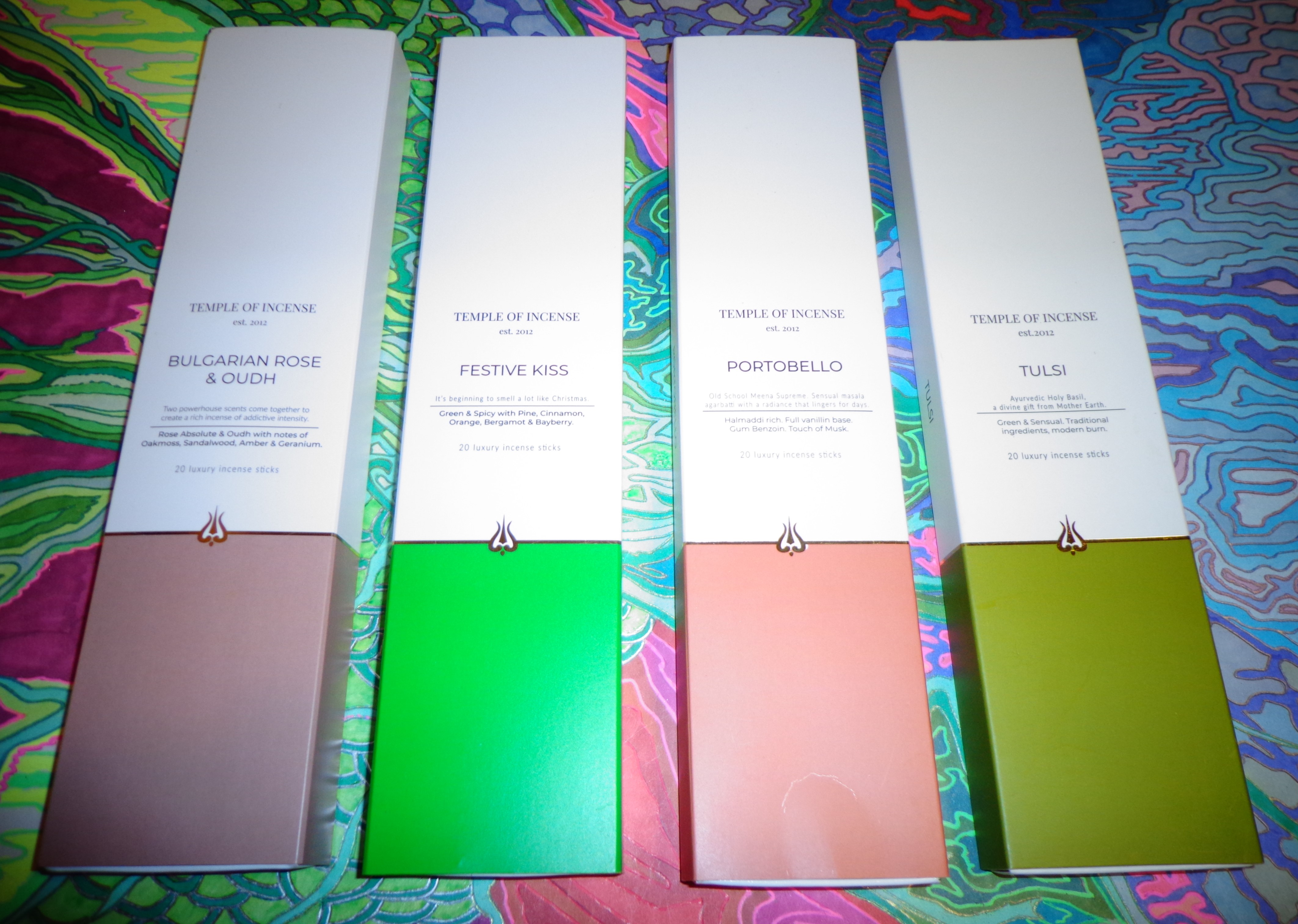 Please note that if you are new to ORS, we have done a wide-ranging number of reviews on the absolutely fabulous Temple of Incense line, all of which can be found by either clicking on the Temple of Incense link under Incense>India or checking out
Please note that if you are new to ORS, we have done a wide-ranging number of reviews on the absolutely fabulous Temple of Incense line, all of which can be found by either clicking on the Temple of Incense link under Incense>India or checking out 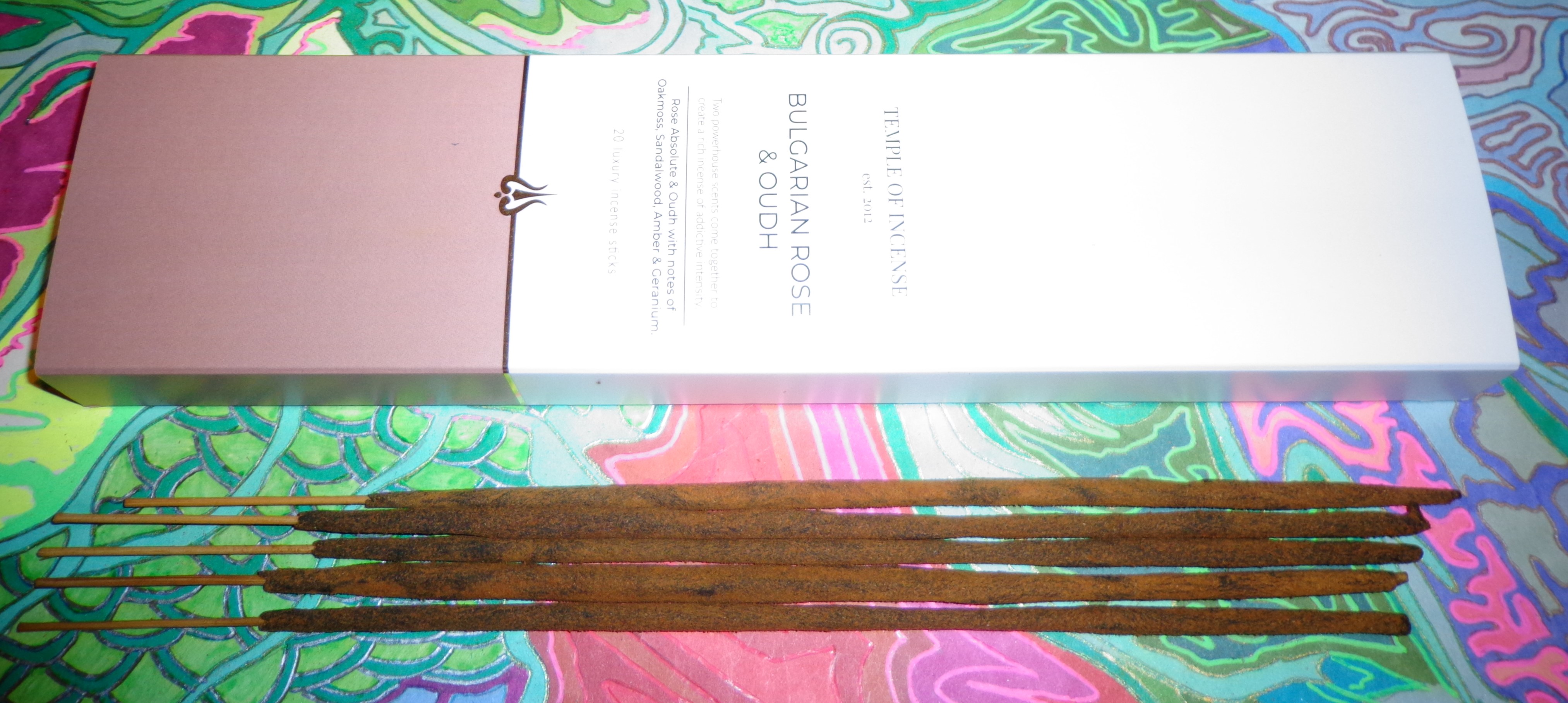 The Aydees announced their new
The Aydees announced their new 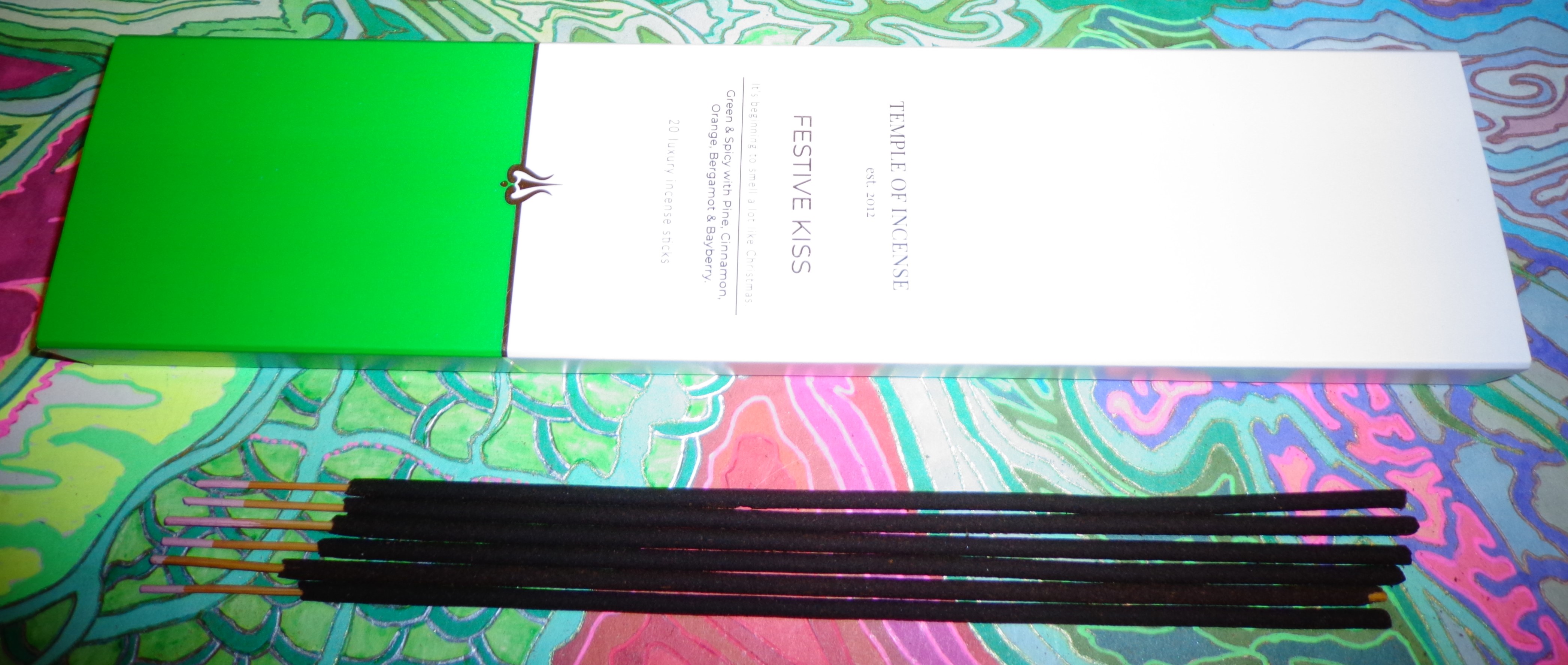
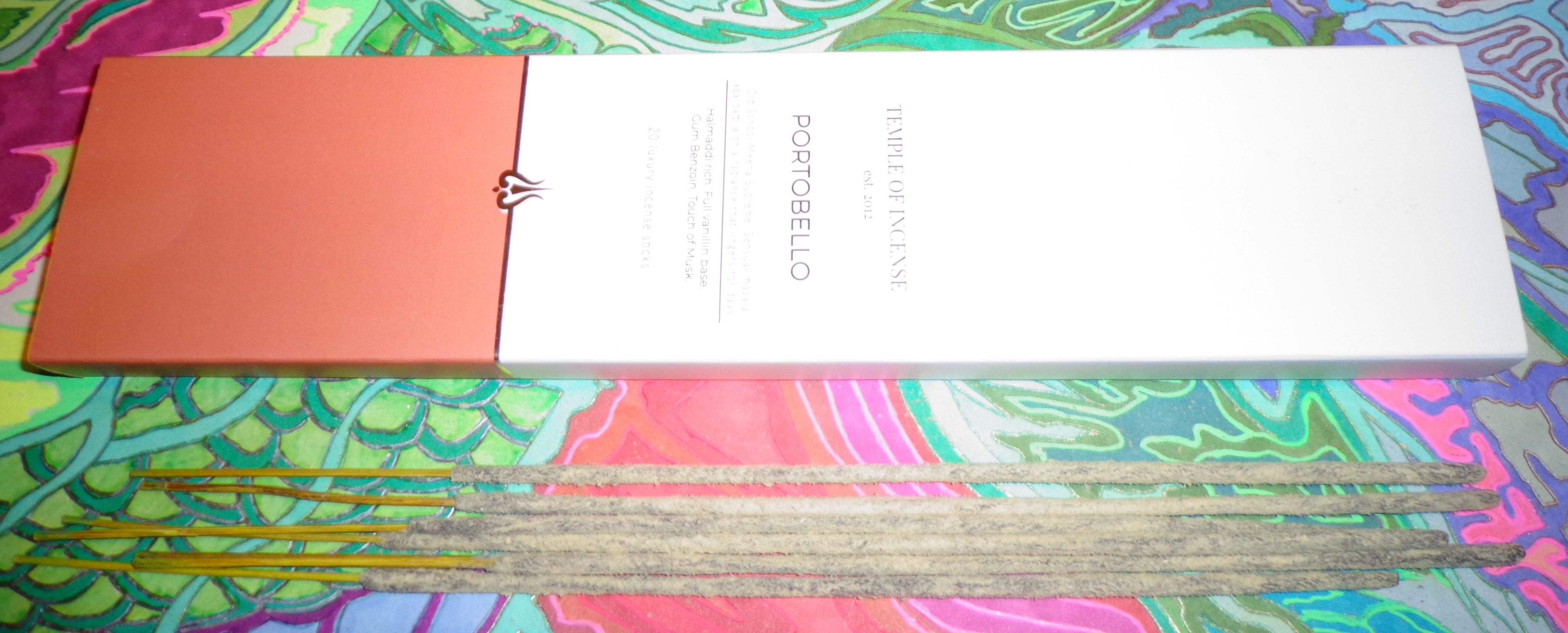
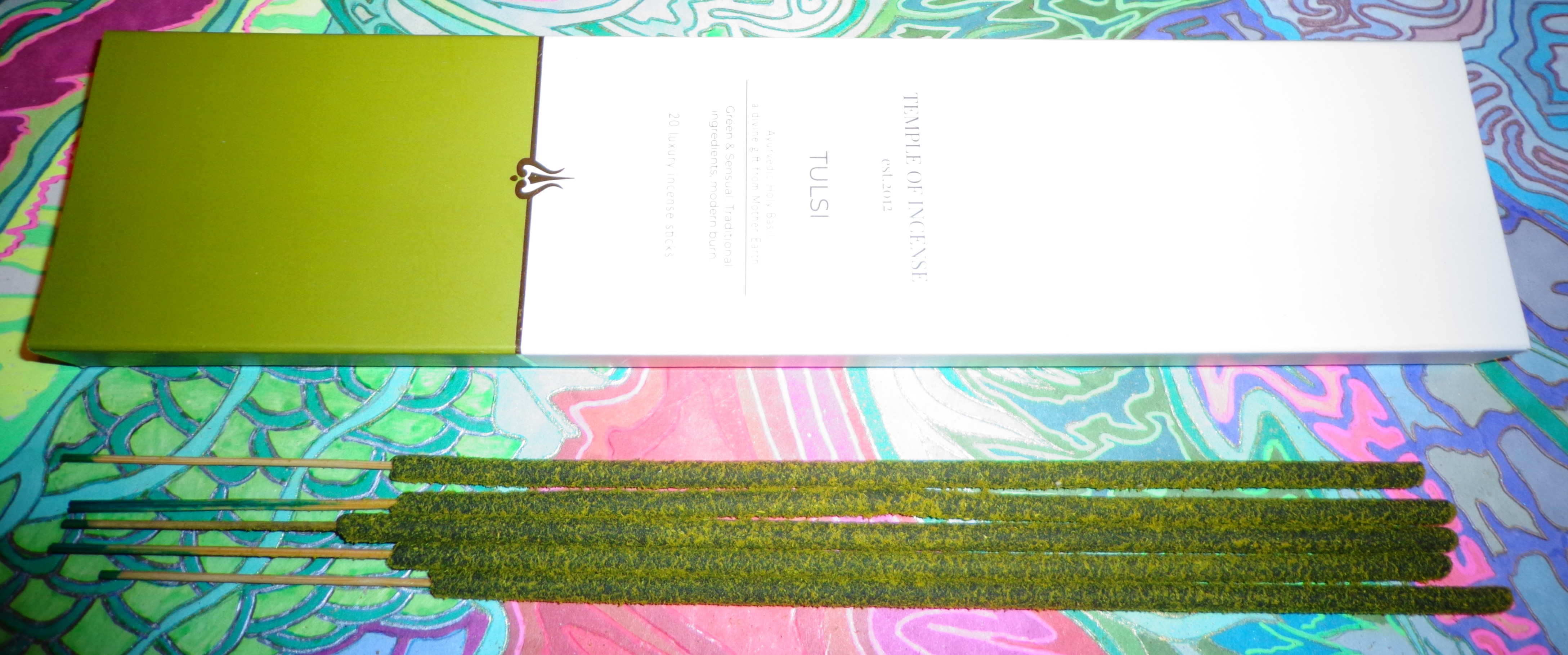 I nearly went to publication with the above three, but the arrival of a couple sticks of
I nearly went to publication with the above three, but the arrival of a couple sticks of 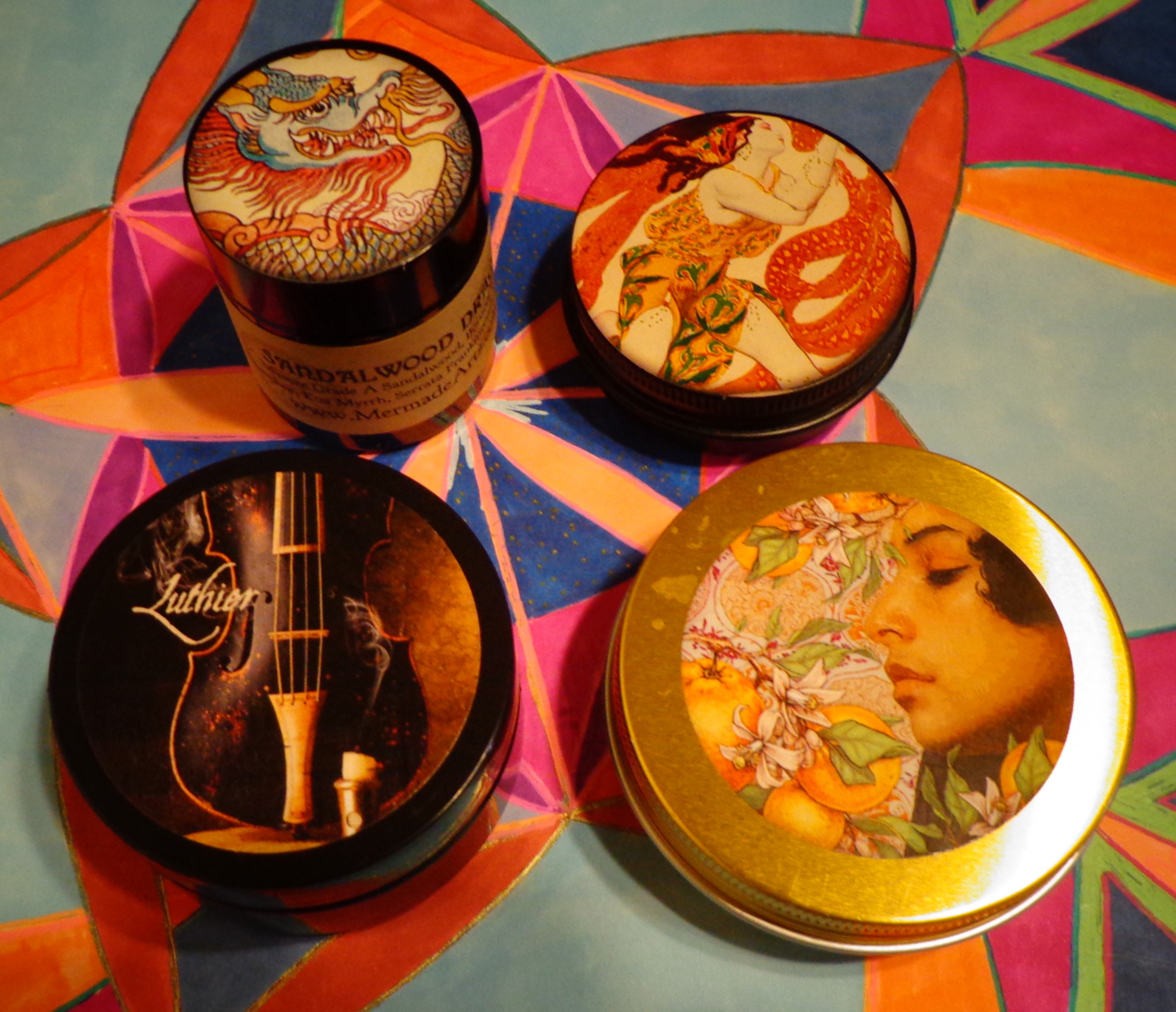
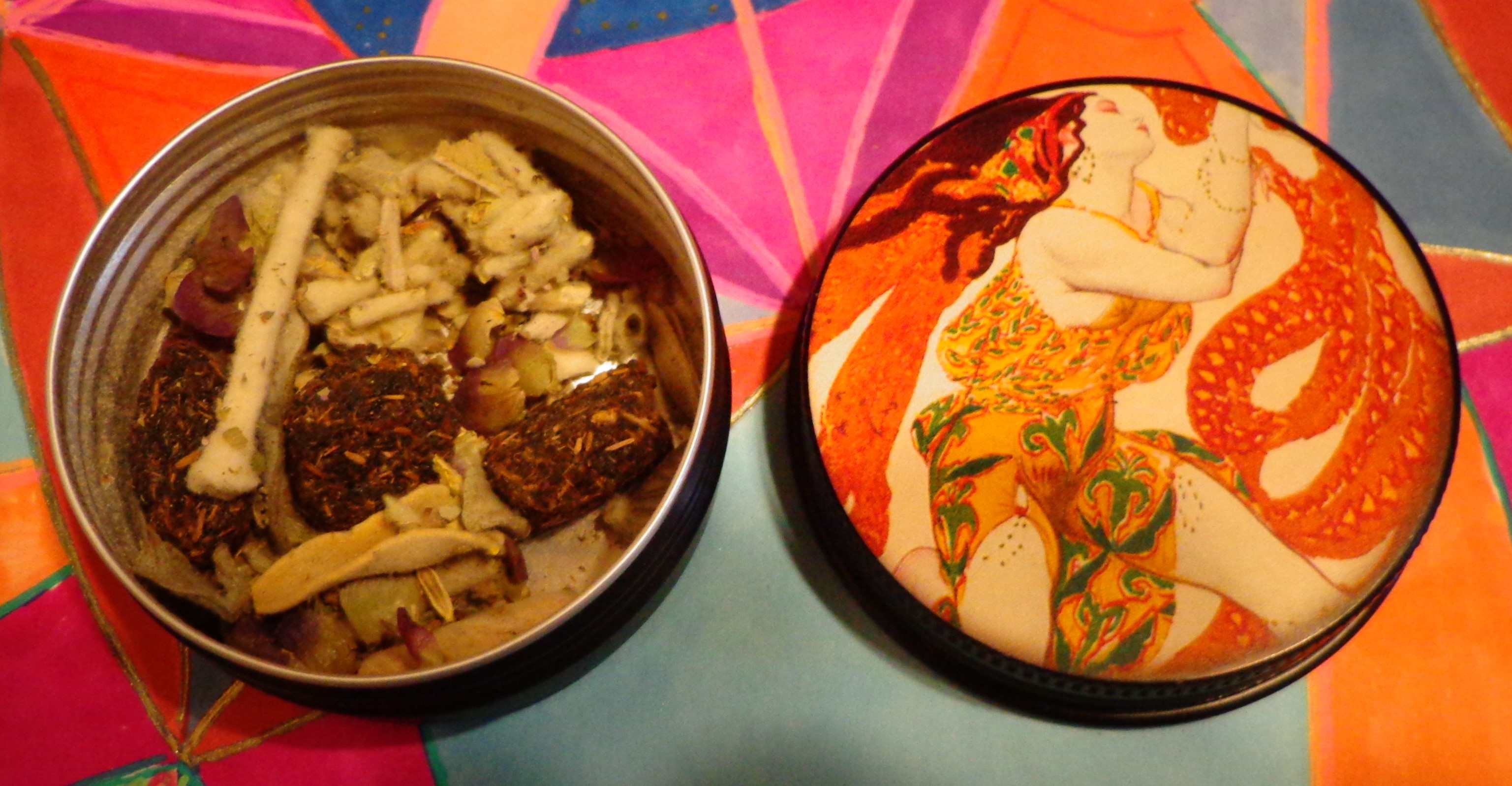 Before I took a look at the ingredients list of
Before I took a look at the ingredients list of 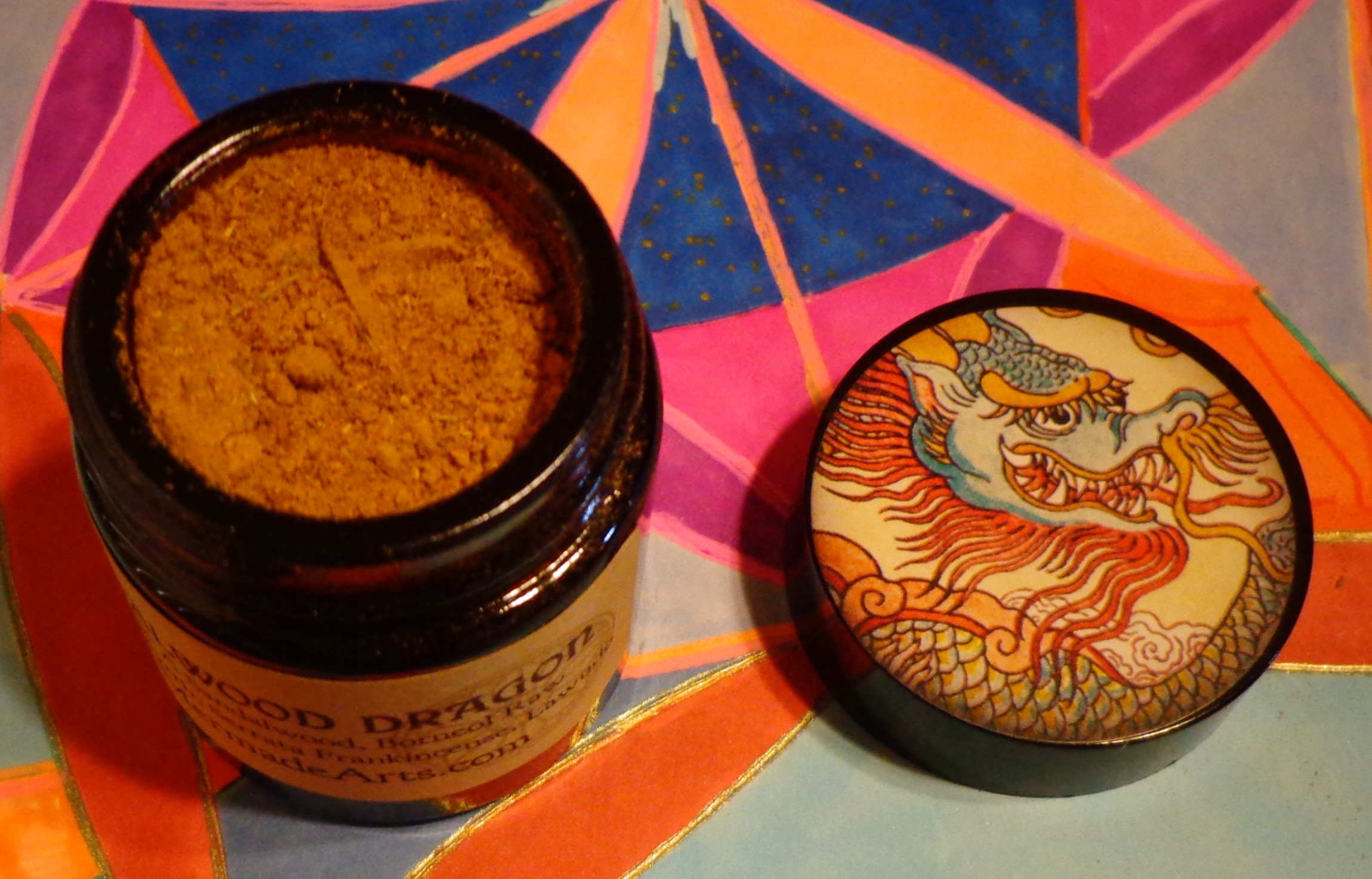 I reviewed a previous vintage of
I reviewed a previous vintage of 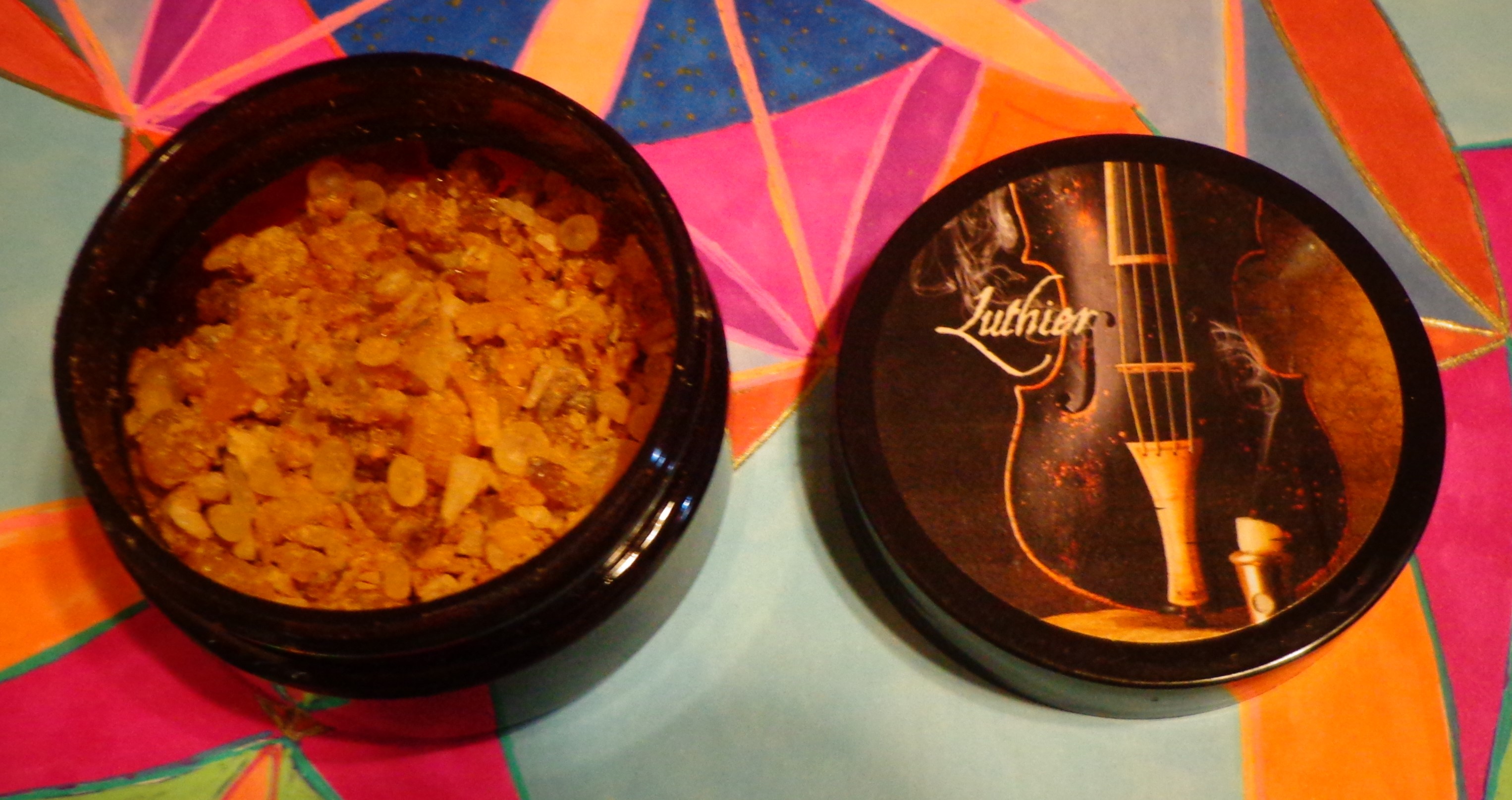 When I was young I used to bike to a record store that was next door to another store that sold stringed instruments. I wasn’t reminded of it until I first heated
When I was young I used to bike to a record store that was next door to another store that sold stringed instruments. I wasn’t reminded of it until I first heated 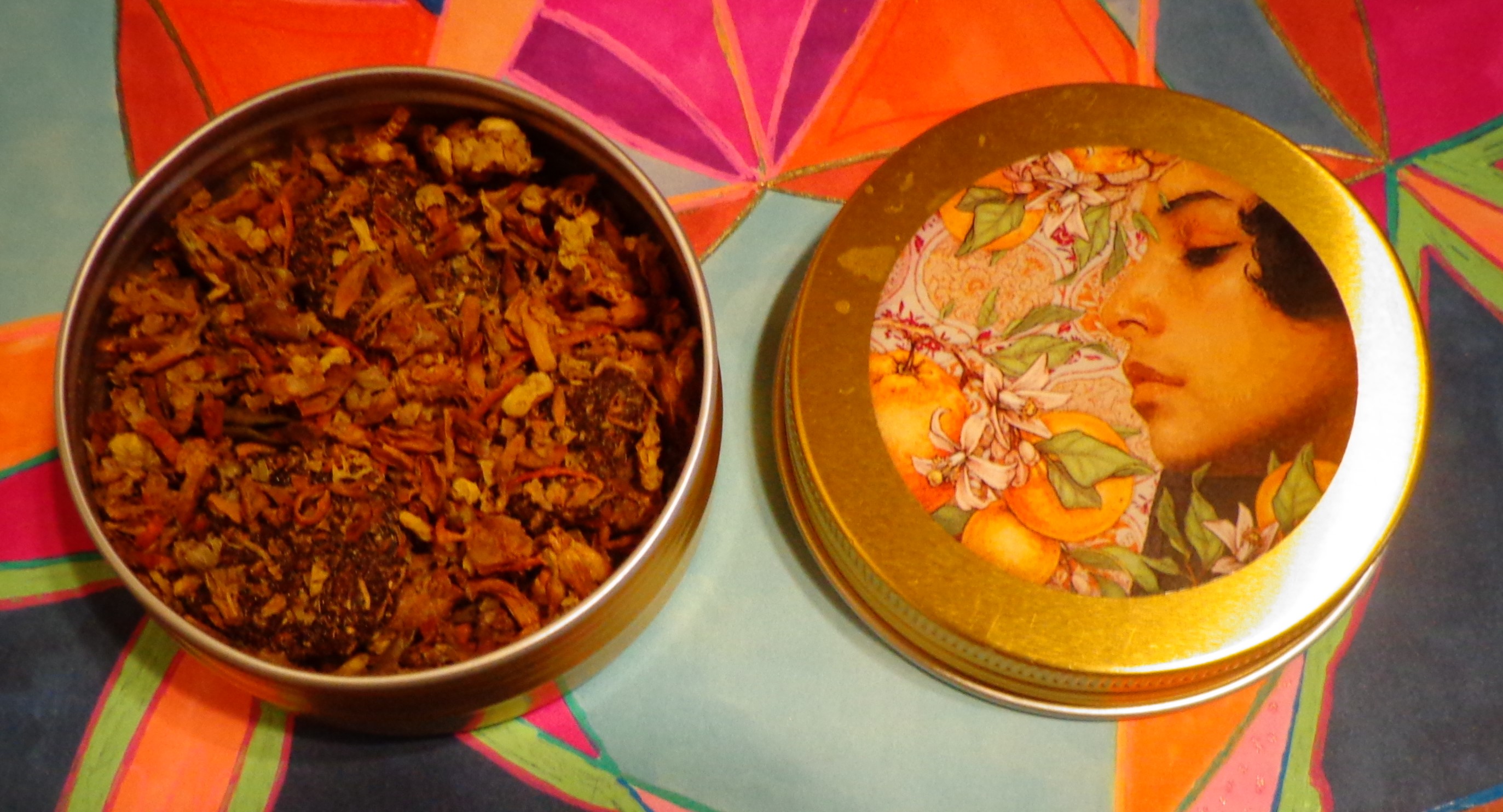 I would have probably liked
I would have probably liked
You must be logged in to post a comment.